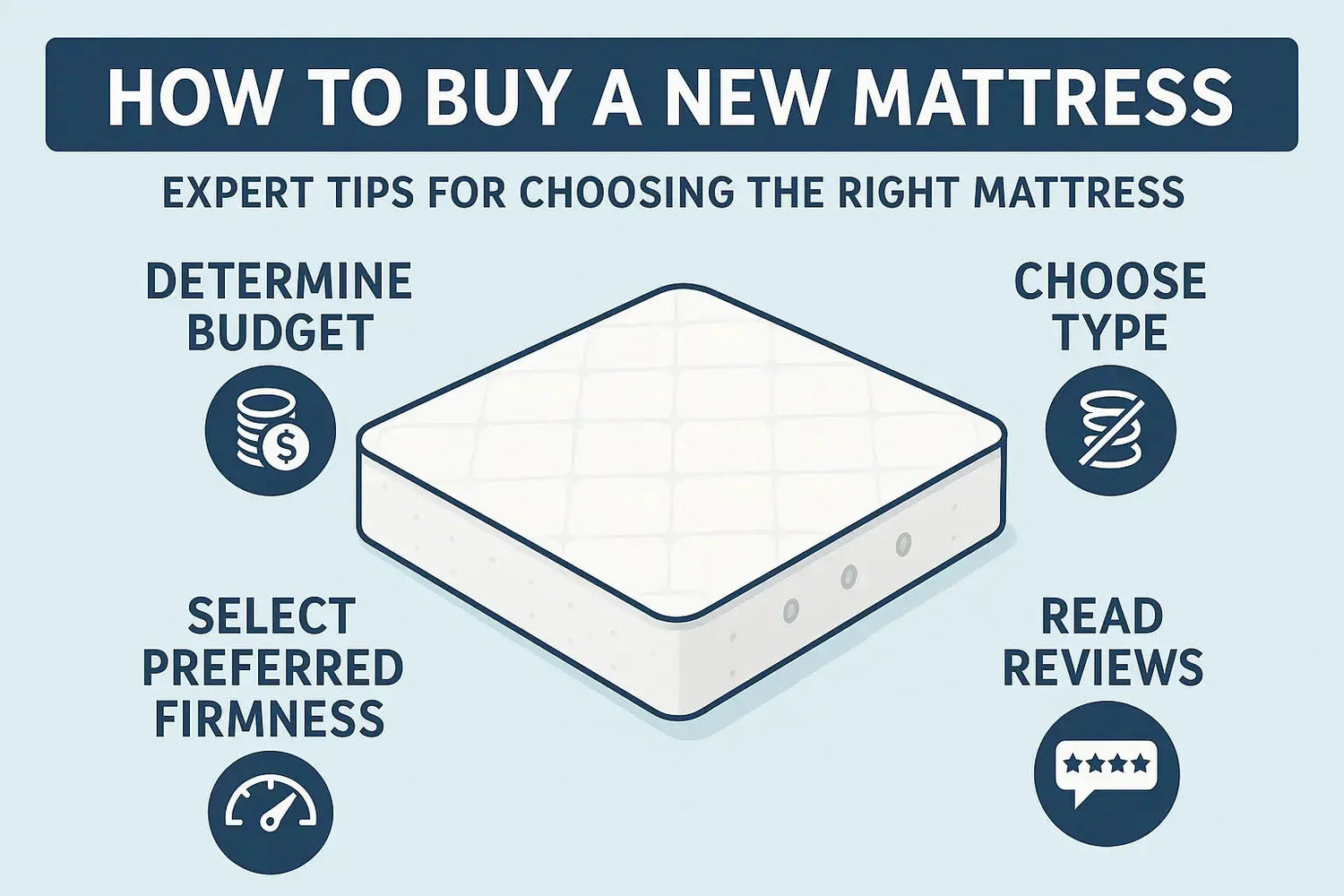
How to Buy a New Mattress: Key Considerations
When it’s time to replace your old mattress, finding the right one for your needs is crucial for ensuring a good night’s sleep. Here are a few essential tips to guide you through the process of buying a new mattress:
1. Consider Your Sleeping Position
Your preferred sleeping position plays a big role in determining the ideal firmness of your mattress. For example:
- Side Sleepers: Typically benefit from a medium-soft to medium-firm mattress that provides cushioning for the shoulders and hips while maintaining spinal alignment.
- Back Sleepers: Often prefer a medium-firm to firm mattress for proper support and spinal alignment.
- Stomach Sleepers: Typically need a firmer mattress to prevent the lower back from sinking too much, which can cause discomfort.

2. Choose the Right Mattress Type
There are several types of mattresses, each offering unique benefits:
- Memory Foam: Known for pressure relief and motion isolation. It’s great for those who suffer from joint pain or share a bed.
- Innerspring: Offers a more traditional feel with bouncy support. It’s ideal for people who prefer a firmer feel and better breathability.
- Hybrid: Combines memory foam and innerspring coils for a balance of comfort and support, making it a versatile choice.
- Latex: Offers a more eco-friendly and durable option. It’s naturally hypoallergenic and can provide responsive support.
3. Firmness Level
Mattress firmness can vary from soft to firm. To find the right one for your needs, it’s important to consider your body type, weight, and personal comfort preferences. Most mattresses come with a firmness scale from 1 (softest) to 10 (firmest). A medium-firm mattress (around a 6-7) is typically recommended for a wide range of sleepers.
4. Set a Budget
Mattresses come in a wide range of prices. While it’s tempting to go for a bargain, investing in a high-quality mattress is essential for ensuring long-term comfort and support. Be sure to set a realistic budget that aligns with your needs, and keep in mind that a higher price can often correlate with better durability and advanced features like cooling technology and pressure relief.
5. Try Before You Buy
If possible, test out the mattress in-store to get a feel for its comfort and support. Many mattress retailers offer a 100-night sleep trial, allowing you to try the mattress at home and return it if it’s not a good fit. This is a great way to ensure that the mattress meets your needs before making a final decision.
6. Check Warranty and Return Policies
Make sure to review the warranty and return policies before making your purchase. A good mattress warranty typically lasts 10 years or more and covers defects in materials and craftsmanship. Ensure that you are aware of the return or exchange policies if the mattress doesn’t meet your expectations after purchase.
Conclusion
Buying a new mattress is an important decision that can significantly impact your quality of sleep. By considering factors like sleeping position, mattress type, firmness level, and budget, you can find a mattress that offers the right support and comfort for a restful, rejuvenating sleep experience. Don’t rush the process—take your time to choose the best mattress for your needs, ensuring it’s a sound investment in your long-term health and sleep quality.




